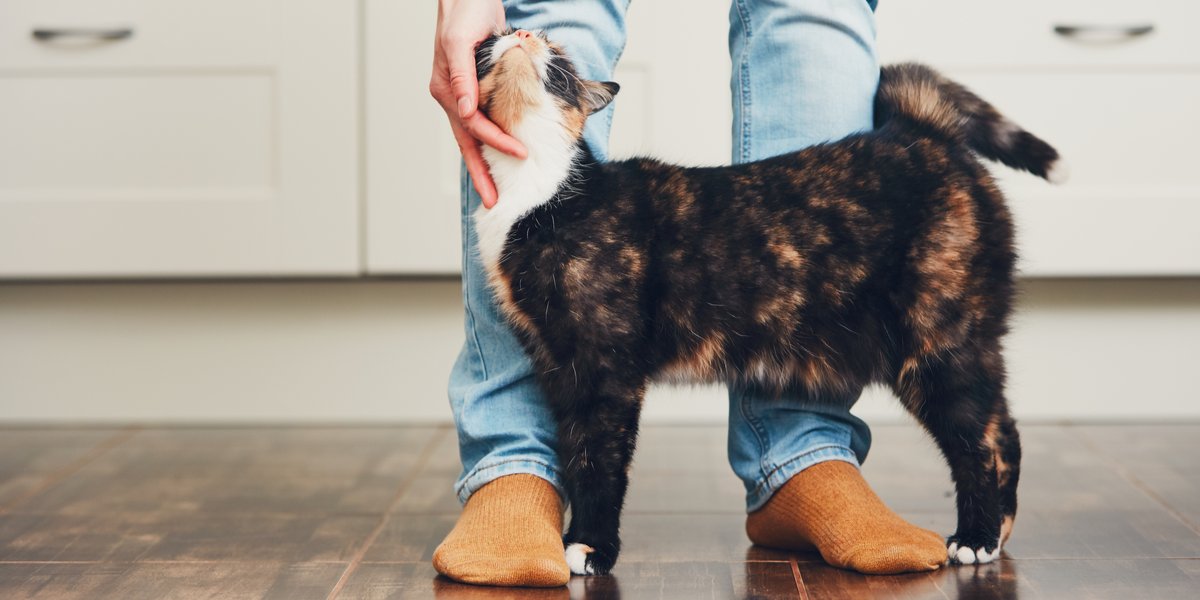
My cats are my world and I cannot imagine life without them, especially during tough times. You can probably relate to the feeling of unconditional love for your cat and the desire to smother him or her in hugs and kisses, but it can be hard to tell whether or not that love is returned.
So how can you make a cat to like you?
In this article, we’ll explore how our cats perceive us and our home, as well as how they demonstrate devotion. We will help you to maximise the human-cat relationship and help to make your cat love you even more.
For those who have not spent much time around cats or consider themselves ‘dog people’, these tips will help build confidence and teach you invaluable knowledge about cats.
How To Get a Cat To Love You?
Most people think cats are mysterious and complex, however once you appreciate them and gain their trust, they will be devoted to you forever. Some will even follow you endlessly around the home while others may bring you ‘gifts’ and shower you with cat cuddles.
Here are a few ways to make a cat love you.
1. Inspire Positive and Caring Human-Cat Interactions.
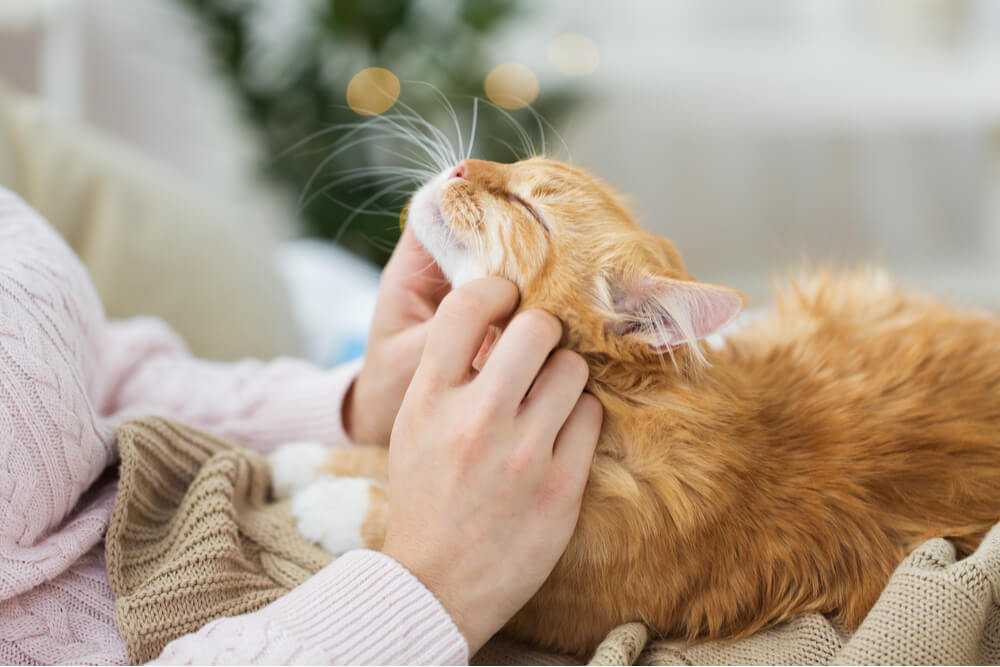
Cats need to feel safe and unconstrained. Allow your cat to give and receive affection on his or her own terms.
Have you noticed that people who dislike or are allergic to cats are often the ones cats are most attracted to? It’s simply because they do not seem like a threat.
Cats are solitary beings who like to be in control. Consider the “less is more” approach, allowing him or her to take charge of social interactions with you and family members.
Provide positive, consistent, and predictable human-cat social interaction at all times.
Stay calm and confident, avoid sudden movements, and avoid any aggressive behaviors.
Our feline companions can sense anxiety or frustration and may run and hide if they feel intimidated. Do not follow or retrieve them from their hiding spot. Respect their privacy.
- Avoid staring at your cat’s eyes and coming straight towards him or her. Instead, blink slowly and wait for him or her to blink back and approach you.
- When greeted, get down to a cat’s level, gently offer a relaxed finger to sniff, and allow the cat to push their head towards you. This action mimics familiar cats who engage in nose-to-nose sniffing.
- While handling, avoid leaning or reaching over your cat as much as possible, use the sideways approach and avert your gaze (evades the cat feeling threatened). Cats generally prefer low intensity and high-frequency handling. Respect their wishes and body language.
- If your cat is hesitant to come towards you, gently toss a treat nearby to help them associate your presence with a positive interaction.
2. Encourage Expression of Natural Predatory Behaviour.
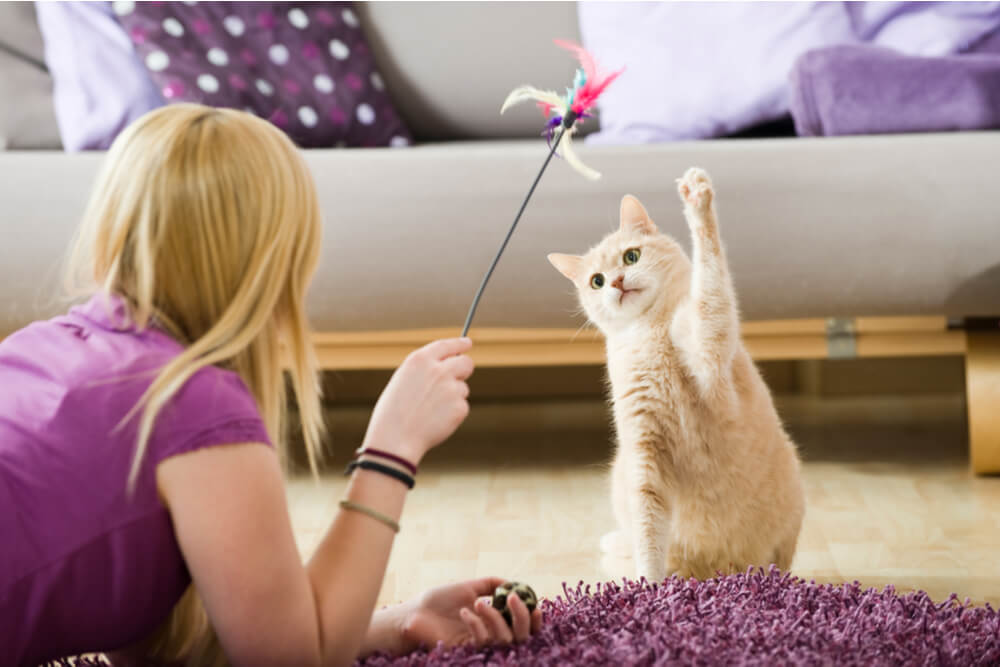
Engaging in predatory play can help to establish a healthy relationship.
Inspire your cat to exercise and express their normal predatory behaviours (stalk, pounce, capture, reward) using play. Try motion sensor and interactive toys, Nina Ottosson Treat Puzzle Games, snuffle mats, Da Purr Peller, imaginative vertical towers, and cardboard castles.
Stimulate foraging by concealing food in different spots. It is more natural for cats to scavenge and eat small meals from multiple locations, aiding mental and physical stimulation.
Naturally, cats have tendencies to explore, forage, climb, hunt, and patrol territories. Fenced cat-friendly gardens, harness and leash walks, and portable enclosures are all environments suitable for such behaviors.
Most cats tend to avoid boundless spaces, which can leave them feeling visible and vulnerable. However, confident, adventuresome cats may enjoy outdoor hiking journeys.
Also Read: The 10 Best Cat Slow Feeders & Puzzle Feeders
3. Teach a New Trick.

Your individual cat can be trained to perform many tricks which can help reduce fear, anxiety, and frustration. Training also reinforces the human-animal bond. Unlike dogs, cats will not take kindly to coercion or petting as a reward. Some cats are food-driven or toy-motivated and can be clicker or target trained.
Also Read: 5 Easy Tricks To Teach Your Cat
Once you figure out their most desirable treat or incentive, start with short sessions lasting a few minutes each day. Recent research suggests that teaching cats simple tasks such as giving a paw, sitting, or high-five may be an effective way to reduce frustration in rescue homes and indoor cats.
4. Guard Against Anthropomorphism
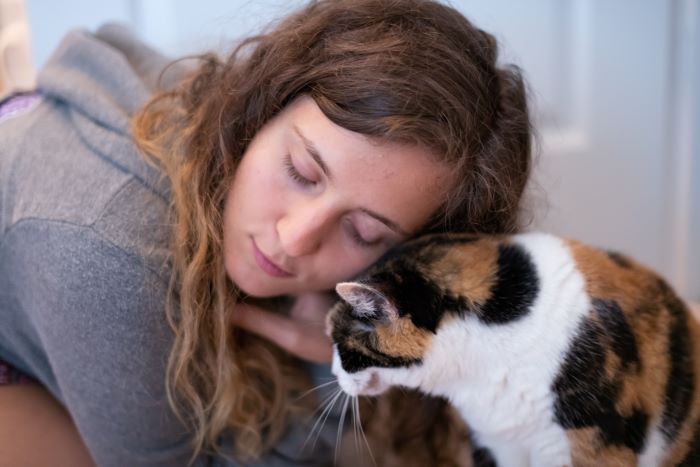
When you’re working in deepening your bond with your cat, it’s important to keep their needs in mind and not anthropomorphize.
Learn as much as you can about felines and what motivates their behaviour.
‘Mother’ but don’t smother your cat with emotions and approachability, avoid picking them up unless necessary.
Provide your cat the flexibility to maintain a sense of control during social contact. Option to initiate an interaction and leave when desired.
Moggies like hiding and sleeping uninterrupted, respect their need for space and serenity – don’t take it personally since they prefer to be alone.
5. Enhance Your Cat’s Environment!

Enriching your cat’s environment can help them to feel more bonded to you. In addition to indoor enrichment, this can involve taking your cat outside on a leash or letting them out in a safe enclosure. Melina Grin / Cats.com
Enhancing your pet’s environment means providing them not only a secure home that meets their specific needs but also a ‘natural’ environment that pleases their individual and instinctive needs.
Cats love three-dimensional living. Height isn’t only pleasing, a form of exercise, but necessary as a security platform and concealment from predators.
Also Read: How To Make A Cat Love You In 3 Easy Steps?
Aromatic stimulation with scent trails consisting of garden leaves and herbs like catmint or catnip can be established for your cat indoors or hidden in boxes.
A recent study concluded that cat enclosures provide a practical solution for indoor and free-roaming cats, it removes the requirement for wandering and has been related to positive changes within the cat’s quality of life and owner’s safety concerns.
6. Inspire Daily Consistent Human-Cat Bond
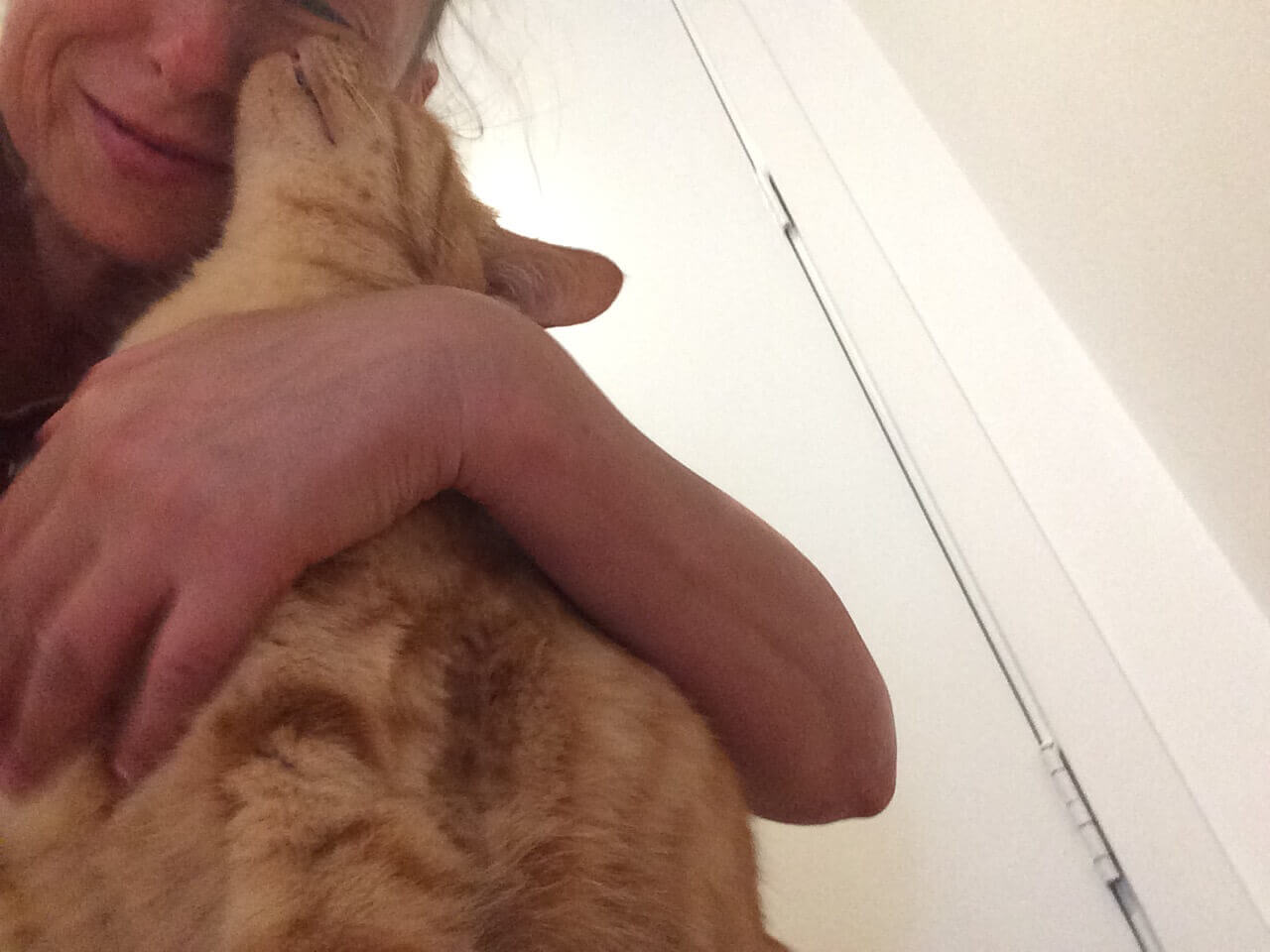
Spending time with your cat in a species-appropriate way will help to strengthen the love and bond between the two of you. Melina Grin / Cats.com
A positive cat-human relationship is useful for both species, it strengthens the love and bond we share for each other. Research shows that pet owners who have a stronger bond with their pet visit the vet more frequently, are more likely to offer preventative care, and more likely to try what the vet recommends (Lue et al 2008).
All you need to do is maintain predictability together with routine to minimize stress, which helps their overall health and welfare.
Allow them to take charge of social interactions, provide opportunities for play (which is ultimately hunting behavior), and recognize your cat’s needs. Give them plenty of time to become aware of new situations, places, children and other people.
7. Introduce Novelty Objects and Encounters
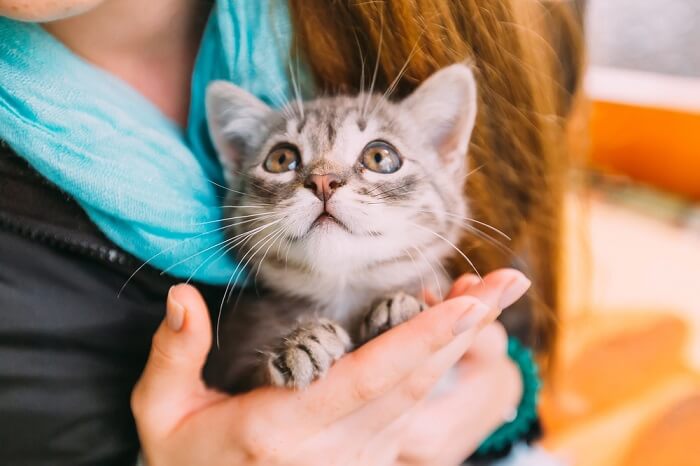
While it’s important to maintain a stable environment for your cat, introducing new scents and other sensory experiences helps to enrich their life.
Cats are explorative animals; they use their sense of smell in many behaviours. They’ll respond differently to the same odour when detected at various times. Hence, cats take pleasure in the introduction of novel food, items, and encounters on regular basis.
Supervised olfactory enrichment activities with the use of herbs and/or silver vine, scent sticks made up of PVC pipe scented with lavender or chamomile, fresh grass clippings, and valerian can be added.
Experiment with fresh food like melon, watermelon, spinach, lettuce, cabbage, and raw meat (those fed wet/dry food).
Also Read: Which Fruits Can Cats Eat?
Trial plant material like tree branches, hay, straw and take indoor cats on leash or pram walks (once fully desensitized to equipment).
8. Engage in Daily Interactive Play
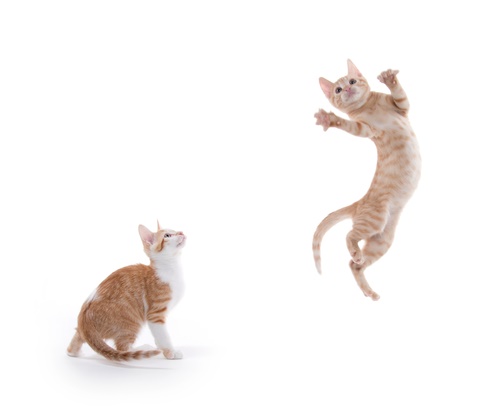
Engaging in regular interactive play with your cat will keep them stimulated, calm, and happy.
Interactive playtime mimics predatory behaviour and should be part of your regular routine. Play encourages exercise, decreases boredom, helps maintain regular weight, prevents behaviour problems, and is particularly important for indoor cats.
[/su_row]Do Not Be Disheartened if Your Cat Is Not a Lap Cat.
Many long-haired breeds and certain semi-long hair felines overheat when sitting on our laps. Instead of being saddened that your cat doesn’t sit on your lap, feel complimented when he or she shares the couch with you.
Handle negative reactions by watching early warning body language signs, aggressive sounds, and stepping away will help build trust and develop a positive relationship.
Conclusion
As the human-cat relationship evolves, life becomes harder, and people become more isolated, we turn towards our cats for comfort and the bond may become more complicated. It is important not to burden our cats with our emotions and allow them to be cats.
Each cat and its owner cultivate a distinctive language and connection that they both understand but is not shared by others.
By getting to know our individual cats’ likes and dislikes, then allowing them to determine the quality and quantity of interaction, may be the key to getting the relationship perfect.
Frequently Asked Questions
How do you bond with your cat?
Learn as much as possible about cats as a species, observe their body language and behaviour, then interpret it based on the feline perspective.
Socialisation time and physical contact through play and exercise increases the human-animal bond.
Offer your cat hiding space and food rewards. Encourage positive behaviour at all times.
Ensure there are sufficient resources within your home in adequate quantities and positioned in diverse locations. Cats who enjoy regular, slow, gentle brushing and contact may enjoy massage. Massage the coat by stroking it along the fibres of the hair. Massage strengthens the immune system, relieves stress, transmits the psychological benefits of touch to your cat, improves emotional wellbeing and overtime can lead to reduction in muscle soreness, pain and increase your friendship.
Cherish your cat’s need to become familiar with new places, situations, and people on their terms and on their own time.
Do cats feel love when you kiss them?
Cats are emotionally sensitive; they feel pleasure, fear, and frustration like people. Most likely they sense love through touch and generally tolerate kissing on top of their head but will not like being kissed on the mouth. Cats sniff, touch, and groom each other but not in the traditional human sense.
Lots of cats lick their owners regularly and according to scientists, the probable explanation is the cat trying to convey something to its owner about their relationship (most likely affection).
Kissing is a human way of displaying affection. It is essential we do not anthropomorphise by attributing human traits and emotions to our cats - learning to love our cat differently is similarly rewarding!
-
Bradshaw, J. (2013, September 14). More than a feline. (N. Scientist, Compiler) UK. Retrieved May 27, 2020
-
Care, I. C. (2018, October 05). Cat Communication. Retrieved May 25, 2020, from International Cat Care: https://icatcare.org/advice/cat-communication/
-
Care, I. C. (2019, February). Cat friendly gardens. (I. C. Care, Compiler) UK. Retrieved May 28, 2020
-
Halls, V. (2011). Furry babies or felines - do we really know our cats? Retrieved May 22, 2020, from Vicky Halls: http://www.vickyhalls.net/guides/The%20Cat%20Winter%202011%20-%20Furry%20babies%20or%20felines.pdf
-
Halls, V. (2012). Cats and people – Getting the Relationship Right. UK. Retrieved May 26, 2020

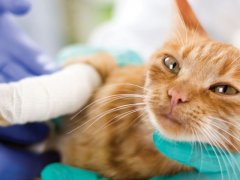





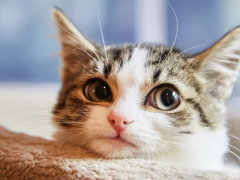
Melina ,
This is a Dave a new kitten owner, Tiger is 15 weeks old and the only kitten in the household . I’m retired and can spend time with him. He is generally very good but lately he developed his jumping skills and is quite graceful dancing around objects on the kitchen counters and kitchen when I’m not looking.
How do I train him not to do this stuff. I have to say he is very graceful walking and not knocking things over in the kitchen. Thank you
Regards,
Dave
Hey Dave, I shot Melina an email with your question. Here’s her response:
“Congratulations Dave on your new family addition! Great question which we will cover thoroughly in the future.
Typically, the kitchen countertop is a high, thrilling exploratory spot for a curious kitten or adult cat. The kitchen bench has food, close to the stove, warm, provides great line of sight and puts your kitten same height level as yourself. In our home, the kitchen has large windows above the countertop serving as viewing platform. It is challenging deterring cats from being on counters if there is a window close by.
Management wise; clear your counter or make it inaccessible. When you’re not around, make the area unattractive or the surface uncomfortable to walk on and remove any bits of food.
Next step provide alternative options and locations which are more enticing such as a cat tree in the same spot (preferably taller tree) and handful of treats. Clicker train your kitten to use the new tree – every time your kitten chooses to jump on the tree instead of the counter, click and treat.
Our clients had success with providing a high chair near the counter top for kitten to rest on while the owner is cooking – treats may need to be dispensed in the early stage and phased out once your cat chooses to jump on the stool instead of the counter.
Consistency and positive reinforcement is key to ongoing success.
Hope this helps, look forward to seeing your kitten pic away from the counter.”
I have a 4 year old cat that has pancreaitis . It is a challenging condition. I am taking him to an excellent vet and he is working with him. I have 7 other pets so it is really a challenge keeping regular food away from him.. He will do fine for 5 or 6 days then has an episode. If any other pet owners have a cat with this condition I would appreciate if they would email me and maybe I can get some advise from others that are dealing with this. Thank you. Donna, [email protected]
Hi Donna,
I’m so sorry to hear about your cat with pancreatitis, my DSH male suffers from Inflammatory Bowel Disease (IBD) with weekly flare ups and he is totally food obsessed, I’m aware how challenging it can be feeding other household pets.
May I ask which pets do you have and if you’ve ever used microchip feeders or created separate feeding areas?
I’ll respond directly once I receive your feedback.
Warm regards
Melina
We have a neutered male “stray” that we have adopted but his previous owner, we know who it is, kept him outside all the time and so he only toilets there. We are not managing to train him for using a litter tray.
He is 4years old. He will hold it in for hours rather than use a tray. Some advice please
Desmond
Hi Desmond
You can follow the step-by-step guide of how to litter train a kitten (https://cats.com/how-to-litter-train-a-kitten), whilst adding some soil from the yard to the cat litter as an attractant until his fully trained. Patience is key, hope this helps, Melina
Our female cat is very fearful of my husband and any male relative but is not fearful of women. We adopted both the female short hair and her brother after our daughter rescued the four kittens from a garage 4 years ago. The male cat is affectionate to both of us. We think some boy or man imprinted a damaging memory that male humans are a threat. Is there anything we can do to improve the female cat’s acceptance of my husband?
Hi Marilyn,
Great question!
To improve her acceptance, get your husband to feed her at least once a day, give her treats from time to time (toss them away from his body and let her chase them), play with her once a day (with her favorite toy) and always praise her. Ultimately build a positive association.
Hope the above suggestions help
Melina
Hello; I’m wondering if it’s really true, that a Ragdoll cat specifically needs a Ragdoll kind of food because of the shaper of their jaws or teeth I suppose? I adopted Hazel at the age of 2years old in 2010 and started on Royal Canine for Ragdolls, she was on this food ever since. When the pandamic hit us, suddenlty that food was a thing of the passed, so I got her on food that look similar in shape as the previous food she had, and it happened to be of the same brand but different breeds, I started on the Maine coon & the Persion dry food, and now I’m trying the Blue Wilderness, suddently I’m realizing that she would now be 15 years old, in your opinion what would be best for her, she still seems pretty healthy, despite her age. Thank you so much for any info!
Hi Suzanne,
Thank you for reading our article, and well done on reaching 15 years young.
When it comes to Ragdolls or other breeds, there’s no one-size-fits-all. There are no significant variations; the only differences are based on your cat’s health and size.
Cats are obligate carnivores. They should be predominantly fed a high-protein diet low in carbohydrates.
Here are the 7 Best Cat foods for Ragdoll Cats: https://cats.com/best-wet-dry-foods-ragdoll-cats
I hope this helps.
Melina